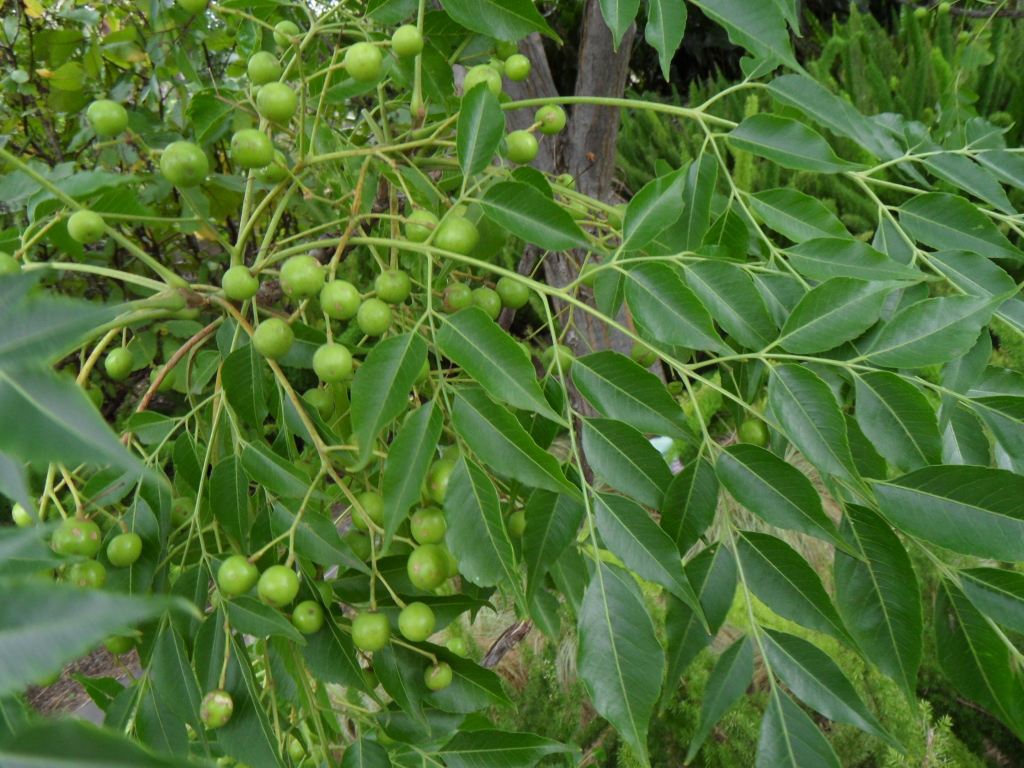Meliaceae
Trees, shrubs, or rarely subshrubs; dioecious, monoecious or polygamous. Leaves spirally arranged, rarely decussate, 1–3-pinnate, rarely simple, petiolate, stipules absent; vegetative buds naked or with scale-leaves. Inflorescence axillary to cauliflorous or epiphyllous, usually thrsoid, rarely racemose, spicate or with flowers in pairs or solitary. Flowers actinomorphic, pedicellate, bracts present; sepals (2–)3–5(–7), fused or free, imbricate or valvate in bud; petals 3–6(–14), fused or free; stamens (3–)5–12(–23), fused or free, anthers 2-locular, longitudinally dehiscent, included or exserted; disc present or absent; ovary superior, (1–)2–6(–20)-locular, ovules 1–many per loculus, style 1 or rarely absent, stigma capitate or disc-shaped, entire or lobed. Fruit a berry, capsule or drupe; seeds winged, or unwinged with a fleshy aril or sarcotesta or a woody or corky sarcotesta, or unwinged, without an aril or sarcotesta.
c. 50 genera and 650 species, predominantly in tropical regions throughout the world; 13 genera, 44 species in Australia.
Several genera are exploited for their timber which is highly valued for furniture making, woodturning, and carving, including Australian Red Cedar Toona, and Neotropical Mahogany Sweitenia and Cedar Cedrela.
 Spinning
Spinning


